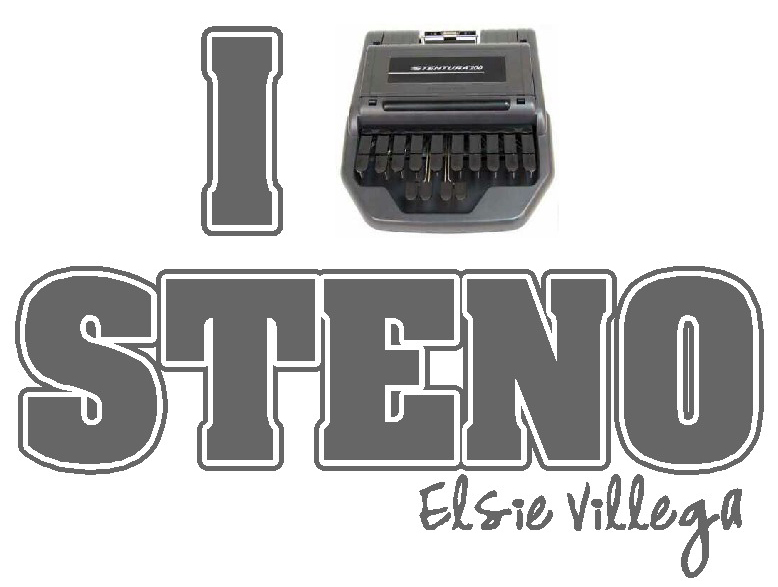Case CATalyst: How To Build A Concordance Index
Theory Thursday: The Proper Way To Take Your Writer On & Off The Tripod
Court Reporting Requirements In Connecticut
 According to CourtReporterEdu.org, the following are requirements for becoming a court reporter in Connecticut: (1) Complete a court reporting degree/certificate program.
According to CourtReporterEdu.org, the following are requirements for becoming a court reporter in Connecticut: (1) Complete a court reporting degree/certificate program.
(2) Take the Connecticut exam for licensure: This exam is given by the Connecticut Court Reporter’s Association. There is a fee to take the test, which consists of an 1-hour 100-question written knowledge test, and a skills examination. The CCRA’s skills exam is comprised of 2 180 lits, 2 200 jury charges, and 2 225 2-voice Q&As. It should be noted that the RPR and any comparable state exam can reportedly be substituted for the CCRA’s test requirement.
(3) Complete an application for Connecticut licensure. The application is accompanied by an almost $300 fee.
(4) For license renewal and maintenance, there must be earned continuing education credits as well as an additional fee.
Steno Fun Fact: The 90-Minute Focus Peak
 Under a sub-heading entitled, “Time Your Breaks,” the March 2015 issue of Money magazine states: “Research shows your brain losses focus on a task after about 90 minutes.”
Under a sub-heading entitled, “Time Your Breaks,” the March 2015 issue of Money magazine states: “Research shows your brain losses focus on a task after about 90 minutes.”
Based on this information, it wouldn’t hurt to take a 5-minute break after an hour and a half of practice to get a focus reboot.
Writing Colloquy For The Witness
 How do you write colloquy for the witness on your machine? Here are a couple of suggestions. Lately, I’ve been favoring the second option.
How do you write colloquy for the witness on your machine? Here are a couple of suggestions. Lately, I’ve been favoring the second option.
Machine Briefs:
OPTION #1:
OPTION #2:
When D-defining colloquy for the witness, don’t forget to add a space after the colon so the colloquy designation translates with two spaces after the colon.
Case CATalyst: Bench Mode
 Bench mode in Case CATalyst allows the stenographer to write without showing the translating text to any realtime recipients. Only the stenographer will be able to see the translation. Bench mode can be toggled on and off.
Bench mode in Case CATalyst allows the stenographer to write without showing the translating text to any realtime recipients. Only the stenographer will be able to see the translation. Bench mode can be toggled on and off.
Machine Briefs:
OPTION #1: {Toggle Bench Mode}= B*EN/B*EN
OPTION #2: {Toggle Bench Mode}= B*EFP/B*EFP
Theory Thursday: The Steno Alphabet
Case CATalyst: The Scan Define Command
 The scan define command in Case CATalyst allows you to fix the last untranlate/mistranslate in your translating file via your steno machine. This command eliminates the necessity of having to remove your hands from your steno machine to use your computer keyboard to correct an untranslated/mistranslate.
The scan define command in Case CATalyst allows you to fix the last untranlate/mistranslate in your translating file via your steno machine. This command eliminates the necessity of having to remove your hands from your steno machine to use your computer keyboard to correct an untranslated/mistranslate.
The scan define command can be defined in your Realtime Commands Dictionary or any other dictionary. The recommended dictionary entry is as follows: SKAN/SKAN= {Scan Define}
Writing the steno on your machine that activates the scan define command will open a power define dialog box which contains last untranslated/mistranslate in the steno field. You can then input your desired action for the edit sought.
Case CATalyst: Don’t Just Backup Your Dictionary, Also Backup Your System Files Case
 System files is a key component to the operation of Case CATalyst software. Without system flies, you will not be able to translate, edit, read, or print a transcript via Case CAT.
System files is a key component to the operation of Case CATalyst software. Without system flies, you will not be able to translate, edit, read, or print a transcript via Case CAT.
Each Case CATalyst user must have one system files case in order to properly operate the software.
The system files case contains: User setting files, dialog settings, keyboard maps, your personal dictionary, index templates (for automatic indexing), layouts case, realtime commands, conflict database, phonetic table, power define codes, EZ speaker codes, and your personal word list.
Due to containing all of the aforementioned pertinent information, it would be wise to periodically backup your system files.

